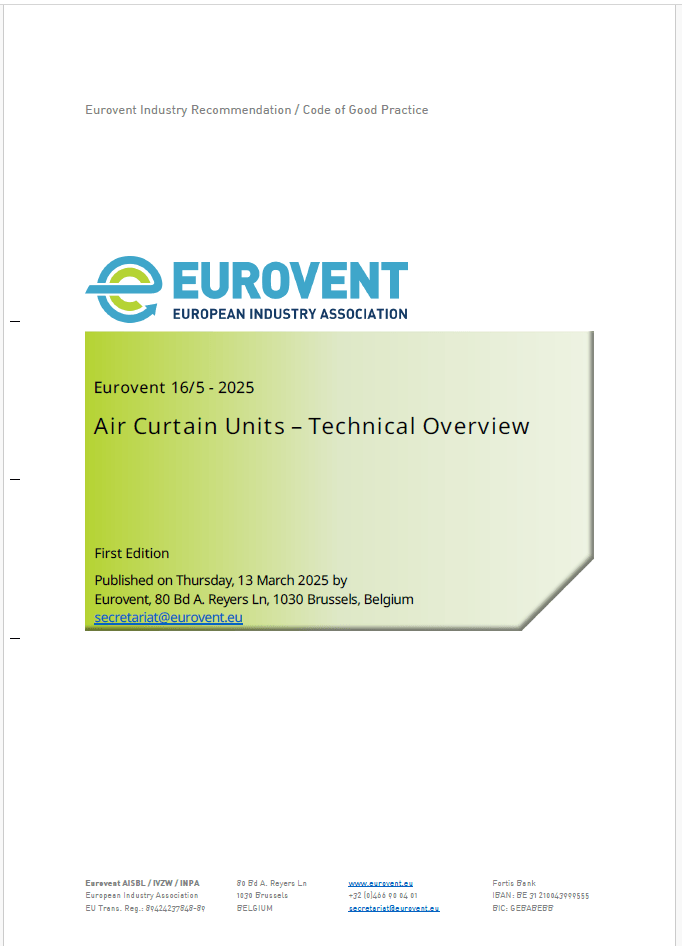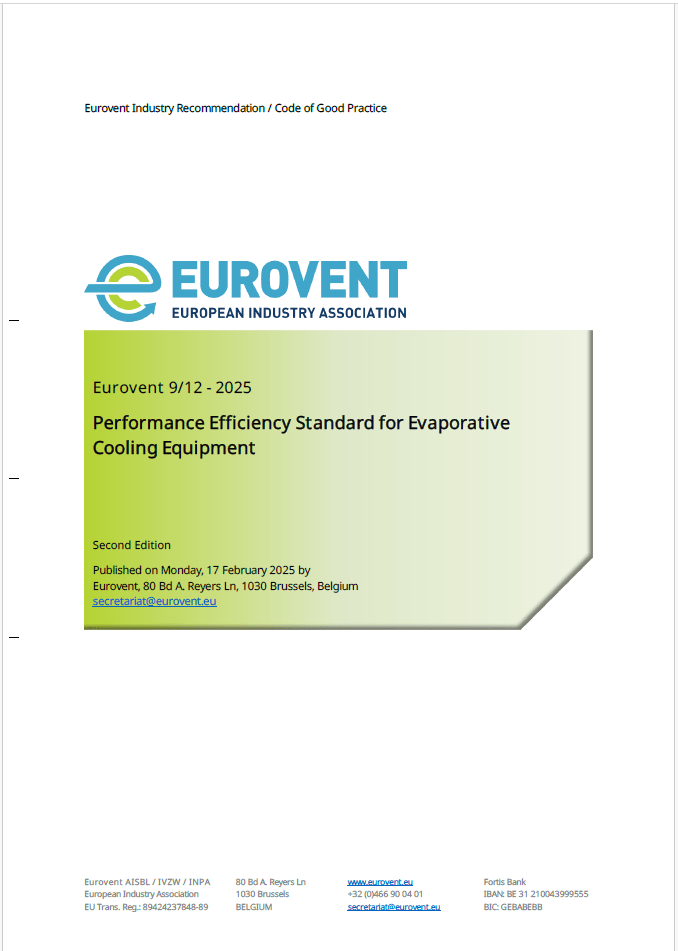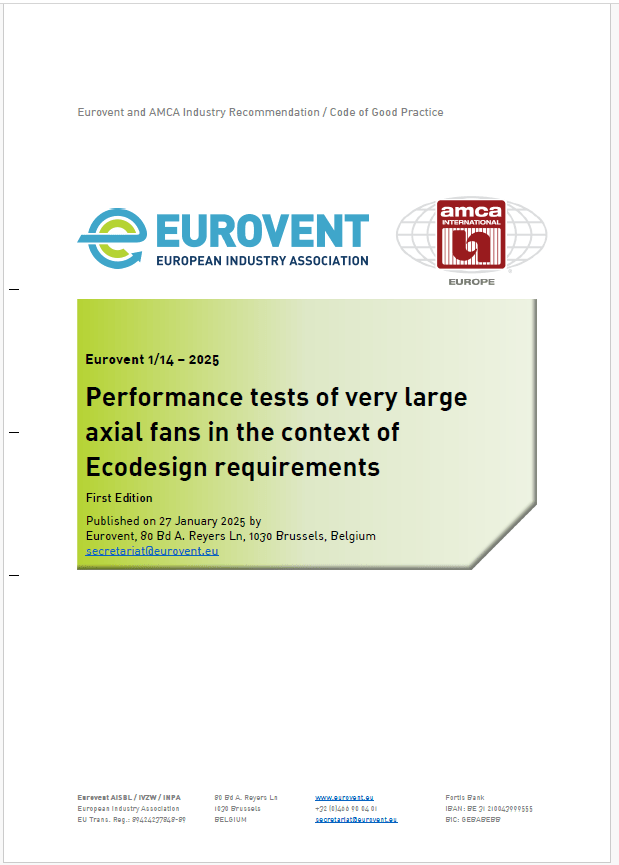Eng. Abdesselam Benyaich, Technical Regulations Head, GCC Standardization Organization (GSO), speaks to Eurovent Middle East and provides a comprehensive overview of the regulatory landscape in the region, the need to build bridges through international partnerships, and opportunities for unification to ensure the safety of consumers and sustainability of the member states.

Can you tell us a bit about the history of the GSO and the role it plays in the regulatory development of the Middle East?
GCC Standardization Organization (GSO) is a non-profit, inter-governmental Standardization Organization that was established by the resolution of the GCC Supreme Council (22nd Session, Muscat, Oman, 30-31 December 2001). GSO assumed its operation in May 2004 with the membership of the governments of The State of the United Arab Emirates, The Kingdom of Bahrain, The Kingdom of Saudi Arabia, The Sultanate of Oman, The State of Qatar, and The State of Kuwait. Furthermore, by resolution of the Board of directors in its 11th session (Doha, 22 November 2009), pursuant to the decision of the GCC Supreme Council in its 29th session (Muscat, 30 December 2008), GSO announced the official accession of the Republic of Yemen to the GCC Standardization Organization starting from 01 January 2010.
GSO aims to unify the various standardisation activities and follow up their implementation and commitment to them in cooperation and coordination with the standardisation bodies in the member states. We want to do this in a way that contributes to the development of their production and services sectors, supports the development of trade among them, ensures consumer protection, safeguards the environment and public health, and encourages Gulf industries, products and services in order to achieve support for the Gulf economy and preserve the gains of countries within the Council, which contributes to reducing technical barriers to trade in line with the objectives of the Customs Union.
What would you name as the most significant regulations the GSO has pushed forward in relation to HVACR?
GSO seeks mainly to address hazards and risks to safety arising from use of consumer products. Therefore, a set of standards and technical regulations have been issued so far. In relation to HVACR, we can mention the following:
The General Product Safety Regulation (BD09100504): The purpose of this regulation is to ensure a high level of protection of the health and safety of consumers and to establish a legislative framework for any product placed on the market or supplied or made available or intended for consumers, or likely to be used by consumers under reasonably foreseeable conditions even if not intended for them. It also aims to ensure the safety of local or imported products placed on internal markets of the Member States.
GSO Technical Regulation for Low Voltage Equipment and Appliances (BD142004-01): The regulation applies to all electrical and electronic devices, appliances and fixtures that contain electrical and/or electronic components designed for use with a voltage rating of between 50 and 1000 V for alternating current and between 75 and 1500 V for direct current. The regulation lays down the mandatory requirements for the safety and electromagnetic compatibility of electrical equipment with which all electrical equipment must comply before their placing on the market, and free movement within the Member States markets. This is the second edition of the GSO Technical Regulation on Low Voltage Electrical Equipment and Appliances, which includes an amendment and update of the first edition (BD07070503) dated on 27/11/2007.
The most important amendments and updates are: (a) Clear definition and determining obligations of economic operators, Conformity Assessment Procedures and obligations of the Notified Bodies; (b) Obligation to the Manufacturers to carry out a risk analysis of all hazards that the electrical equipment may present, as well as an assessment of the potential exposure to such hazards; (c) Additional requirements related to electromagnetic compatibility of low-voltage electrical equipment; (d) Another important aspect is the presumption of conformity given to the IECEE-CB Scheme as per the technical aspects.
This second edition has been approved by the GSO Board of Directors in its 20th meeting (Riyadh, 5th November 2014). The enforcement started from the 1st of June 2015 in an experimental way, while the full enforcement was on the 1st of July 2016.
The Technical Regulation deals with safety essential requirements and EMC; while non covered aspects, such as Energy Efficiency are left to national Technical Regulations for some products including HVACR.
GSO Standard for Energy Labelling and Minimum Energy Performance Requirements for Air-Conditioners (GSO2530:2016): This regulation specifies the energy labelling requirements and the Minimum Energy Performance Standard (MEPS) requirements for single-package of window type, split-system non-ducted air conditioners using air-cooled condensers, split-system ducted air-conditioners using air-cooled condensers, and heat pumps using air-cooled condensers for the residential, commercial, and industrial sector as applicable in accordance with GSO SASO Standards. It is applied to units designed to operate in AC single phase or three-phase circuits according to GSO 1899/2009 “GCC Standard voltages and frequencies for AC transmission and distribution systems”. It covers units with capacities up to and including 70000 Btu/h (20 kW). This standard is applied to the Sultanate of Oman and Yemen, while it does not apply to the rest of GSO Member States.
What do you see as the bigger obstacles in harmonising standards and regulations in the GCC?
Harmonising standards and technical regulation is a long-term action calling for a clear vision as well as relevant tools for harmonisation. While the strategic and institutional framework including the GCC chart, which calls for integration between member states, and the economic agreement which aims at setting up a single market between member states and a single-entry point for customs, it is however much more difficult to reach a full harmonisation of standards and technical regulations.
This is due to a set of factors including: (a) the differences of economies among member states; (b) consequently, the institutional role and importance of national standardisation institutions, as well as the GSO; (c) consequences of the international crisis, which apparently did not help to support the trend to opening markets and integration. Opportunities for integration and harmonisation still exist, further reinforced by the post-crisis situation, as the best response to the need for establishing the most suitable infrastructure system in the region while optimising costs and allowing for the best economic results.

The GSO is cooperating among others with CEN/CENELEC. What are your impressions of this cooperation so far and what are your expectations for the future?
GSO seeks to strengthen and sustain cooperation with its partners to exchange expertise; transfer international knowledge and practices in the field of standardisation and related activities; link and integrate the work programmes of the GSO and Member States with those of relevant Parties. GSO has signed several of Memorandum of Understandings and Technical Cooperation Agreements with Standardisation Bodies at national, regional, and international levels. The technical cooperation agreements with CEN / CENELEC open the door for large cooperation to facilitate the exchange of information and support alignment and harmonisation in the standardisation activities. The main objectives are: (1) to foster closer cooperation between GSO and ISO and IEC for the development of regional and international standards; (2) to provide European contribution to the development/revision/implementation of future Gulf technical regulations based on European legislation (such as Low Voltage, Toys, etc.); (3) to gather intelligence and exchange information on specific sectors.

GSO is working closely with CEN/CENELEC to further strengthen this partnership and support key objectives and strategies, including the adoption of standards, harmonisation of technical committees, sharing of knowledge, experience, best practices, and other mutual benefits.
Are there any regulations for HVACR in the pipeline at the moment?
GSO is currently conducting consultation with member states to develop a harmonised single standard for Energy Labelling and Minimum Energy Performance Requirements for Air-Conditioners, which could allow for harmonising conformity assessment procedures based on their requirements.
How do you decide to get active on a specific topic? How does the development process of a regulation look like?
Developing Technical Regulations is one of the regulatory means of dealing with situations where consumer safety is at stake. Therefore, the GSO`s regulatory process is in accordance with the guidance document approved by the GSO Board of Directors. According to the said guidance document, GSO Technical Regulations are developed for high priority product categories for Member States. These are identified using feedback from the relevant activities such as the market monitoring by member states as well as the conformity assessment of products and other information from member states.
The process includes: (a) preparing a draft of TRs by Working Groups under the Gulf Committee on Conformity Assessment (GCCA); (b) examining the draft by GCCA; (c) validation of the draft by the Technical Council (TC); (d) final approval of the draft by the Board of directors (BD).
It is important to note that the process includes notification to the WTO once the draft is submitted to the TC, as to allow for receiving comments from WTO signatories and revision.
Product quality, safety and energy performance are clearly the most important aspects, regulations must address. What industry segments in your mind are the most critical, or do you consider to be susceptible to poor quality and of potential risk to consumers?

Considering the recent experience of member states in developing their quality infrastructure to support strong monitoring of products safety in the region, and mainly the various legal frameworks for safety and market monitoring, we should confirm that safety aspects in all fields, and energy performance to a lesser extent, are most important for the regulatory process. We may consider that quality aspects could be dealt with by voluntary tools, such as non-mandatory standards as well as awareness and education.
The children`s toys are considered one of the critical products to address, given the proportion of young under 14 in the Gulf population (above 30 %); the electrical products come in the second position as important for harmonising safety requirements. Other fields include cosmetics, then machineries,
Other fields that are not less important, but from the environmental point of view first and safety as well, includes energy performance for electrical products, water conservation devices, and the restriction of the use of Hazardous Substances in Electrical and Electronic Equipment.
For more information: www.gso.org.sa.



















